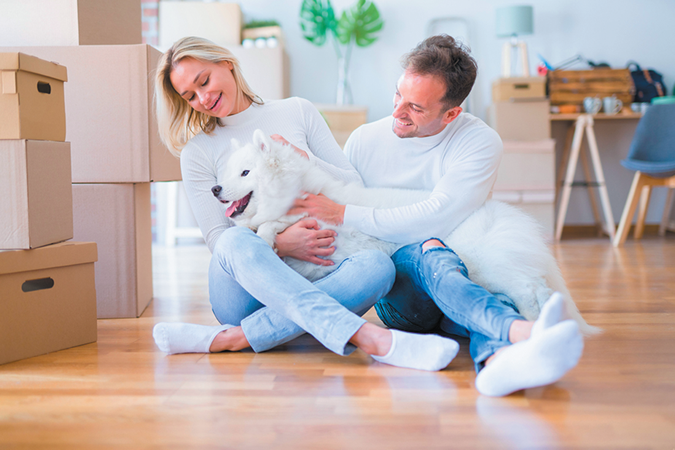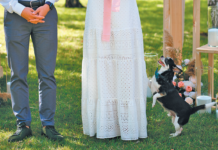You need watch only two or three episodes of House Hunters on HGTV to figure out that a lot of young couples preview what parenting will be like by starting with a dog. One of their “must haves” is a big fenced-in yard for “Trixie” or “Max” or “Daisy.” There’s nothing wrong with the urge to nurture a dog before nurturing a child. Dogs provide great companionship for young couples, whether they’re delaying starting a family or choosing not to have one. But you want to raise your pet in such a way that if human children do come along, the dog’s life won’t be upended. Some guidelines…
- Don’t turn your pet into a “yuppy puppy.” Of course you want to treat your dog affectionately and indulge him, cuddle him, and play with him. But you need to build some structure into his routine — set house rules, and stick to them. It could be things as simple as making him sit for his food and not paying him attention when he whines. If you end up letting your lovable pet run the show, he’s going to have a rude awakening when a baby eventually comes along and he has to share the home’s most valuable resource: your care and attention.
- Once a baby does come into your lives, try as hard as you can not to depart from your pet’s routine. It can be very difficult to walk him at the times he’s used to being walked when your own sleep is interrupted every 2 to 3 hours for feedings. But if two partners can tag team, even by taking the dog out with the baby carriage alongside them, it’s best for your pet’s continued sense of security.
- Don’t ignore the dog while the baby is awake. A lot of first-time parents make the mistake of waiting for the baby to nap before paying the dog some attention. All that does is make the dog feel shortchanged by the new little one. Instead, let the dog hang out with you while you’re feeding the baby or changing him. Maybe even throw your pet his favorite squeaky toy while you’re tending to the new human family member, or give him a food treat. That way, the dog won’t feel the baby has wrecked his life.
- Protect the dog from the baby as the child learns to crawl and becomes mobile. Make sure the dog can retreat to his crate or other personal space like his doggie bed — in an out-of-the-way spot that the baby can’t get near.
- Separate dog toys from baby toys. The last thing you need is a dog feeling the need to jealousy guard his toys. His teeth are definitely sharper than your child’s.
- Once your toddler starts walking, don’t let him eat on the run. Toddlers are very much at a dog’s level, and a cookie or piece of meat flying by in your little one’s hand could prove too tempting. Your young one could inadvertently end up with a bitten finger.





